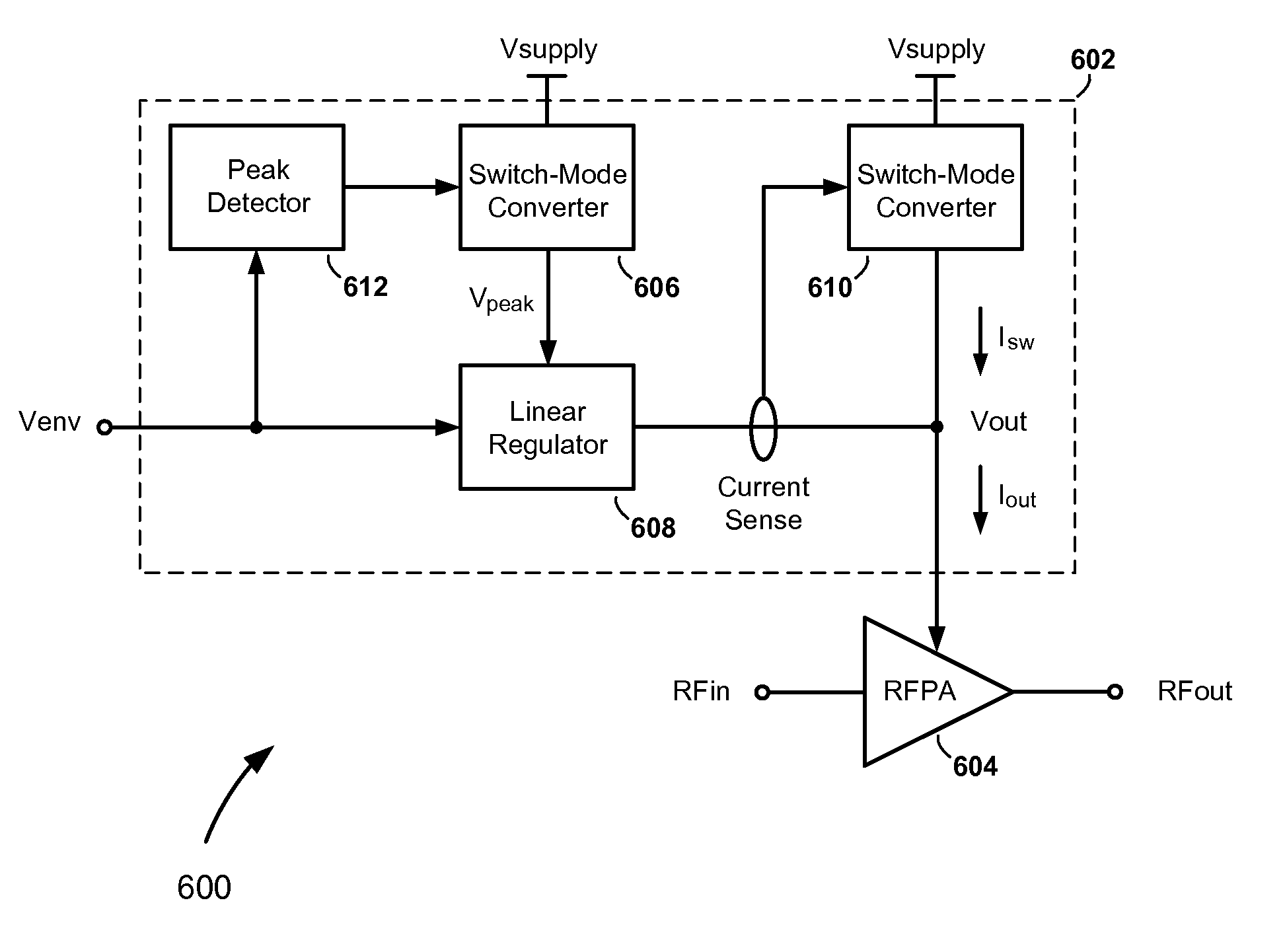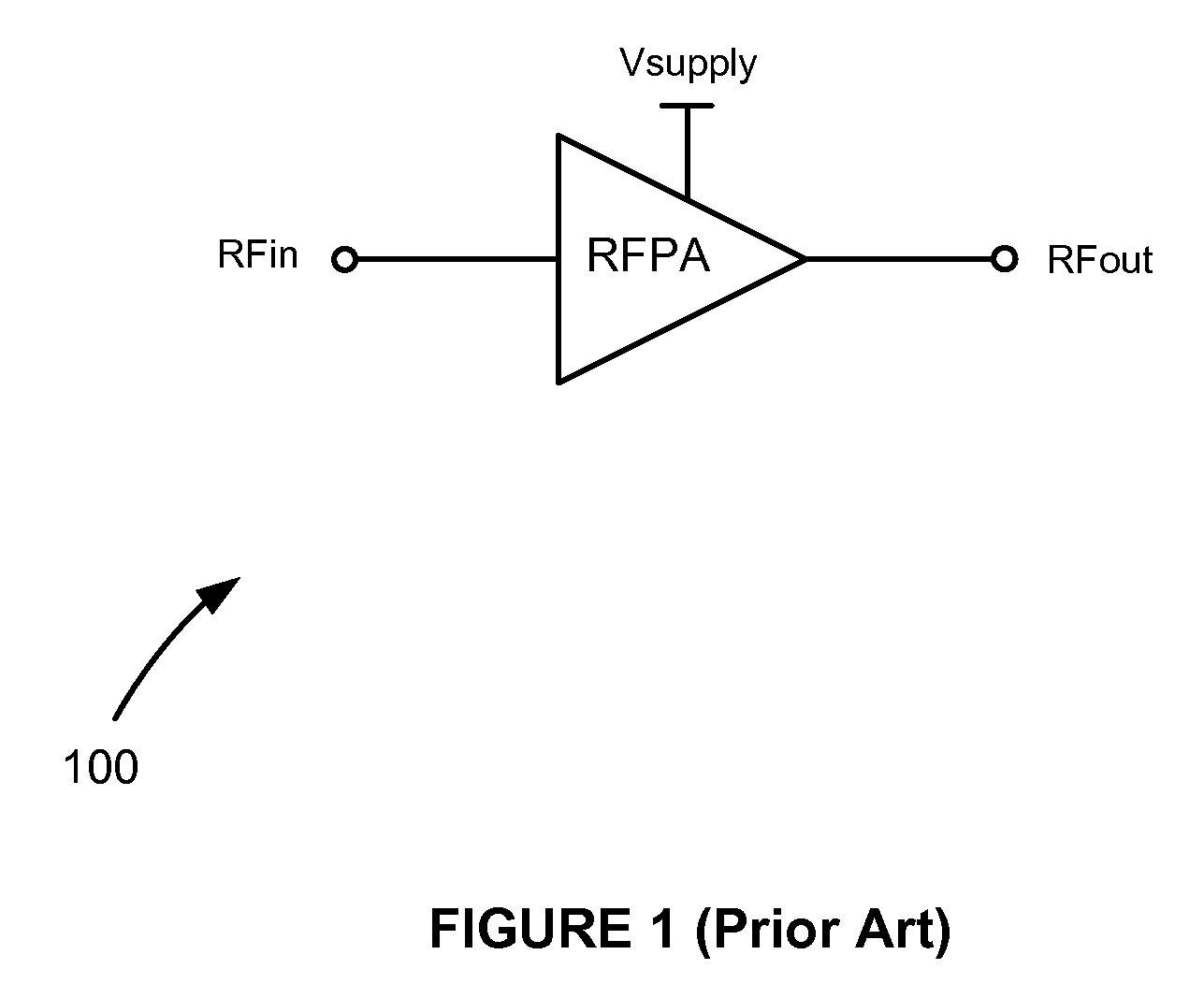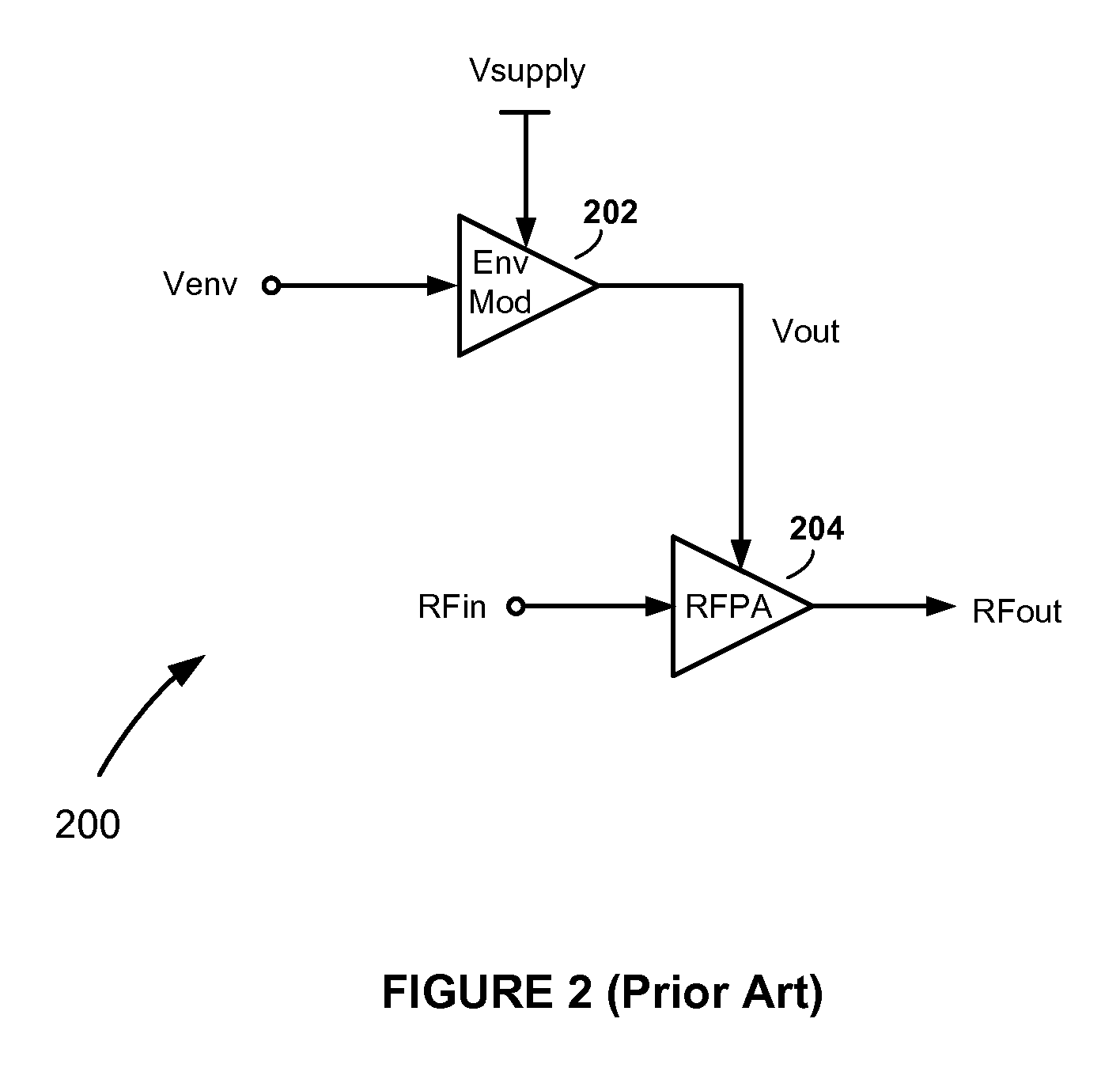High-efficiency envelope tracking systems and methods for radio frequency power amplifiers
a radio frequency power amplifier and envelope tracking technology, applied in process control, automatic control, instruments, etc., can solve the problems of inefficient input signal amplitude, fixed drain bias approach is not often a suitable approach to delivering power to an rfpa, and not very efficient converter of power, so as to achieve wide bandwidth and improve the efficiency of the regulator, and therefore the envelope modulator
- Summary
- Abstract
- Description
- Claims
- Application Information
AI Technical Summary
Benefits of technology
Problems solved by technology
Method used
Image
Examples
Embodiment Construction
[0025]Referring to FIG. 6, there is shown an envelope tracking (ET) system 600, according to an embodiment of the present invention. The ET system 600 comprises an envelope modulator 602 and a radio frequency power amplifier (RFPA) 604. The RFPA 604 includes an RF input, which is configured to receive an RF input signal, RFin, an RF output, which is configured to provide an RF output signal, RFout, and a power supply input, which is configured to receive an envelope modulated power supply signal, Vout, from the envelope modulator 602. The envelope modulator 602 includes a first and second power supply paths, which are connected in parallel between a direct current (DC) power supply voltage, Vsupply, and the power supply input of the RFPA 604. The first power supply path includes a first switch-mode converter (e.g., a buck converter) 606 connected in series with a linear regulator 608. The second power supply path includes a second switch-mode converter 610.
[0026]According to an aspe...
PUM
| Property | Measurement | Unit |
|---|---|---|
| parasitic capacitance | aaaaa | aaaaa |
| current | aaaaa | aaaaa |
| voltage | aaaaa | aaaaa |
Abstract
Description
Claims
Application Information
 Login to View More
Login to View More - R&D
- Intellectual Property
- Life Sciences
- Materials
- Tech Scout
- Unparalleled Data Quality
- Higher Quality Content
- 60% Fewer Hallucinations
Browse by: Latest US Patents, China's latest patents, Technical Efficacy Thesaurus, Application Domain, Technology Topic, Popular Technical Reports.
© 2025 PatSnap. All rights reserved.Legal|Privacy policy|Modern Slavery Act Transparency Statement|Sitemap|About US| Contact US: help@patsnap.com



